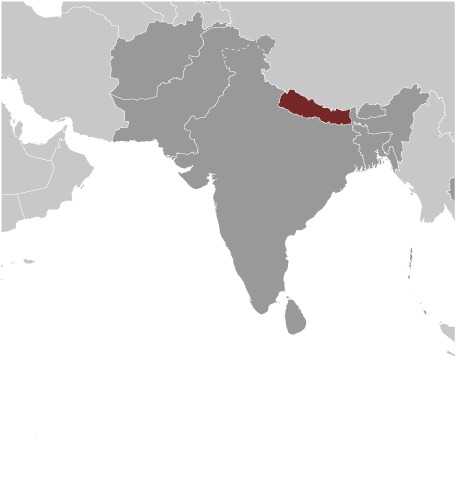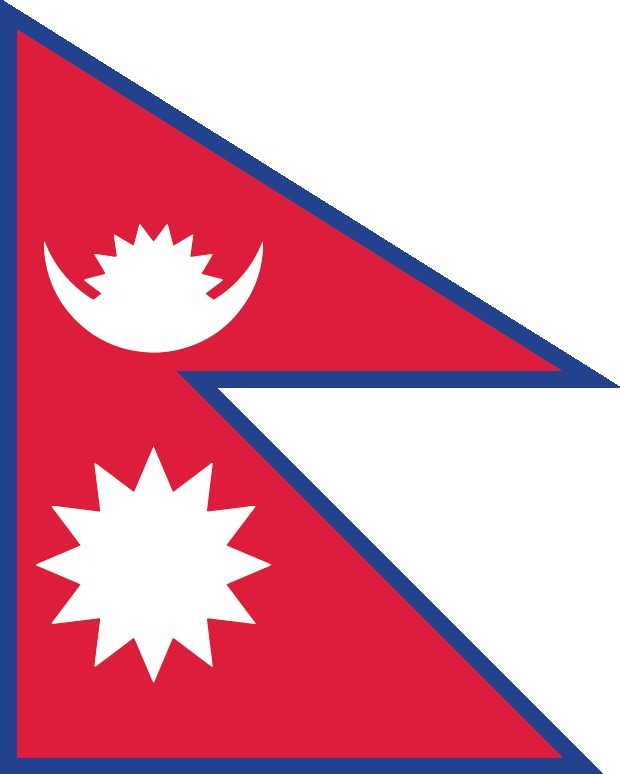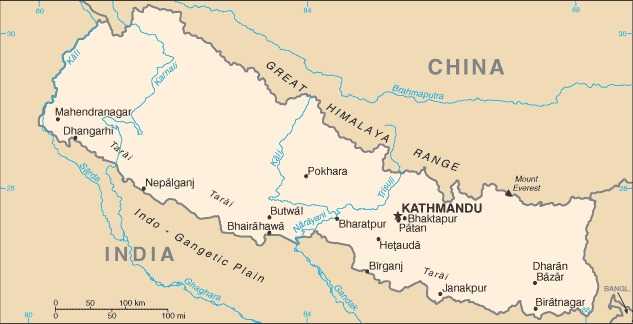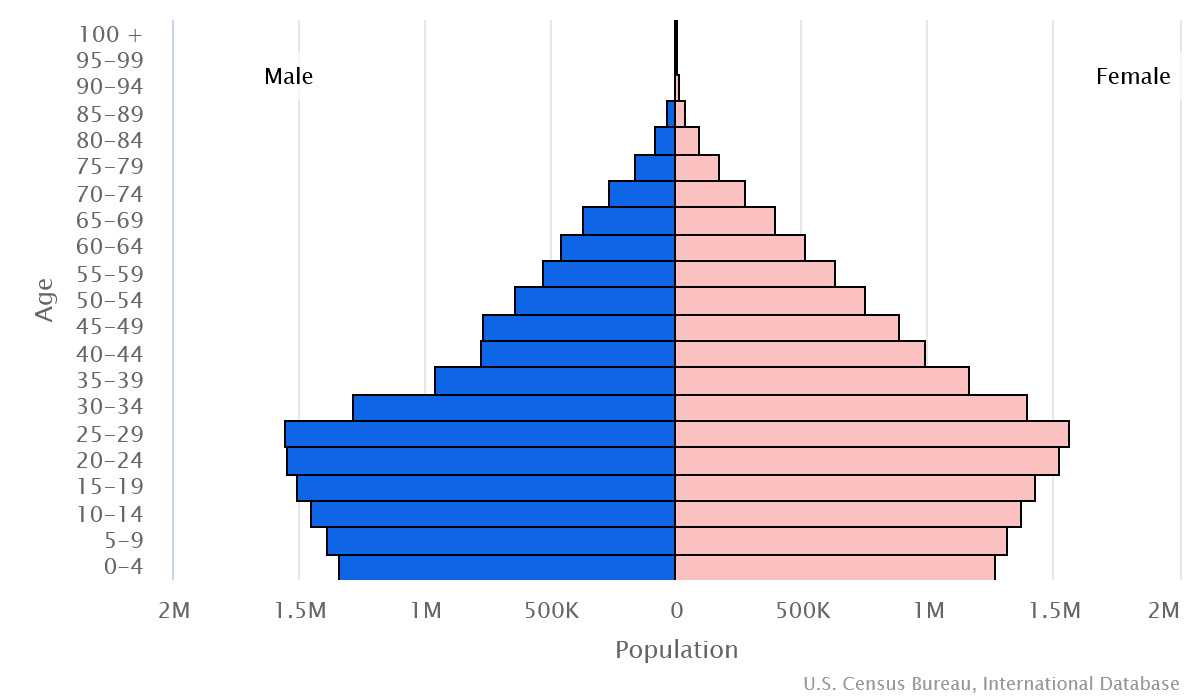Introduction
Background
During the late 18th and 19th centuries, the principality of Gorkha united many other principalities and states of the sub-Himalayan region into a Nepali Kingdom. Nepal retained its independence after the Anglo-Nepalese War of 1814-16, and the subsequent peace treaty laid the foundations for two centuries of amicable relations between Britain and Nepal. In 1990, a multiparty democracy within the framework of a constitutional monarchy was established.
Geography
Area
total: 147,181 sq km
land: 143,351 sq km
water: 3,830 sq km
Climate
varies from cool summers and severe winters in north to subtropical summers and mild winters in south
Natural resources
quartz, water, timber, hydropower, scenic beauty, small deposits of lignite, copper, cobalt, iron ore
People and Society
Population
total: 31,122,387
male: 15,240,643
female: 15,881,744 (2024 est.)
Ethnic groups
Chhettri 16.5%, Brahman-Hill 11.3%, Magar 6.9%, Tharu 6.2%, Tamang 5.6%, Bishwokarma 5%, Musalman 4.9%, Newar 4.6%, Yadav 4.2%, Rai 2.2%, Pariyar 1.9%, Gurung 1.9%, Thakuri 1.7%, Mijar 1.6%, Teli 1.5%, Yakthung/Limbu 1.4%, Chamar/Harijan/Ram 1.4%, Koiri/Kushwaha 1.2%, other 20% (2021 est.)
Languages
Nepali (official) 44.9%, Maithali 11.1%, Bhojpuri 6.2%, Tharu 5.9%, Tamang 4.9%, Bajjika 3.9%, Avadhi 3%, Nepalbhasha (Newari) 3%, Magar Dhut 2.8%, Doteli 1.7%, Urdu 1.4%, Yakthung/Limbu 1.2%, Gurung 1.1%, other 8.9%; note - 123 languages reported as mother tongue in 2021 national census; many in government and business also speak English (2021 est.)
Religions
Hindu 81.2%, Buddhist 8.2%, Muslim 5.1%, Kirat 3.2%, Christian 1.8%, other 0.5% (2021 est.)
Population growth rate
0.7% (2024 est.)
Government
Government type
federal parliamentary republic
Capital
name: Kathmandu
Executive branch
chief of state: President Ram Chandra POUDEL (since 13 March 2023); Vice President Ram Sahaya Prasad YADAV (since 20 March 2023)
head of government: Prime Minister Pushpa Kamal DAHAL (since 26 December 2022); Deputy Prime Ministers Narayan Kaji SHRESTHA (since 26 December 2022), Rabi LAMICHHANE (since 26 December 2022), Raghubir MAHASETH (since 6 March 2024), Upendra YADAV (since 10 March 2024) (an)
Legislative branch
description: bicameral Federal Parliament consists of:
National Assembly (59 seats; 56 members, including at least 3 women, 1 Dalit, 1 member with disabilities, or 1 minority indirectly elected by an electoral college of state and municipal government leaders, and 3 members, including 1 woman, nominated by the president of Nepal on the recommendation of the government; members serve 6-year terms with renewal of one-third of the membership every 2 years)
House of Representatives (275 seats; 165 members directly elected in single-seat constituencies by simple majority vote and 110 members directly elected in a single nationwide constituency by closed-list proportional representation vote, with a threshold of 3% overall valid vote to be allocated a seat; members serve 5-year terms); note - the House of Representatives was dissolved on 22 May 2021, but on 13 July, the Supreme Court directed its reinstatement
Economy
Economic overview
low-income South Asian economy; post-conflict fiscal federalism increasing stability; COVID-19 hurt trade and tourism; widening current account deficits; environmentally fragile economy from earthquakes; growing Chinese relations and investments
Real GDP (purchasing power parity)
$122.242 billion (2022 est.)
$115.745 billion (2021 est.)
$110.404 billion (2020 est.)
Real GDP per capita
$4,000 (2022 est.)
$3,900 (2021 est.)
$3,800 (2020 est.)
Agricultural products
rice, vegetables, sugar cane, potatoes, maize, wheat, buffalo milk, milk, fruit, mangoes/guavas
Industries
tourism, carpets, textiles; small rice, jute, sugar, and oilseed mills; cigarettes, cement and brick production
Exports
$2.733 billion (2022 est.)
$2.52 billion (2021 est.)
$1.771 billion (2020 est.)
Exports - partners
India 68%, United States 10% (2019)
Exports - commodities
soybean oil, palm oil, clothing and apparel, carpets, nutmeg (2021)
Imports
$15.462 billion (2022 est.)
$16.993 billion (2021 est.)
$10.694 billion (2020 est.)
Imports - partners
India 70%, China 15% (2019)
Imports - commodities
refined petroleum, iron, broadcasting equipment, natural gas, rice (2019)
Exchange rates
Nepalese rupees (NPR) per US dollar -
Exchange rates:
125.199 (2022 est.)
118.134 (2021 est.)
118.345 (2020 est.)
112.609 (2019 est.)
108.93 (2018 est.)
Page last updated: Wednesday, May 01, 2024




